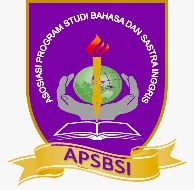The implementation of gamification to teach grammar in higher education
Abstract
Teachers today must create strategies or techniques that meet both the demands of students and the times since we are today grow and develop alongside technology. A gaming technique called gamification can be used in non-game environments, like education. In addition, many students continue to believe that grammar is uninteresting and contains a lot of content. The purpose of this study is to better understand how the lecturers utilize gamification in the classroom and how students react to it when it is used to teach grammar in higher education settings. A qualitative case study methodology is used in this research approach. Data were gathered through observation, interviews, and documentation; they were then condensed, displayed, and used to make inferences and conduct verification. Twenty-three students and a lecturer took part in this investigation. The findings are broken down into two points based on the research objectives. The implementation of gamification in grammar instruction can be done in ten phases and is supported by current theory. The second discovery is that there are five possible student reactions to gamified learning, each of which relates to the positives and negatives of utilizing gamification. The results of this study should help provide further light on how gamification might be used to teach English, particularly grammar.



_.jpg)
_.jpg)




